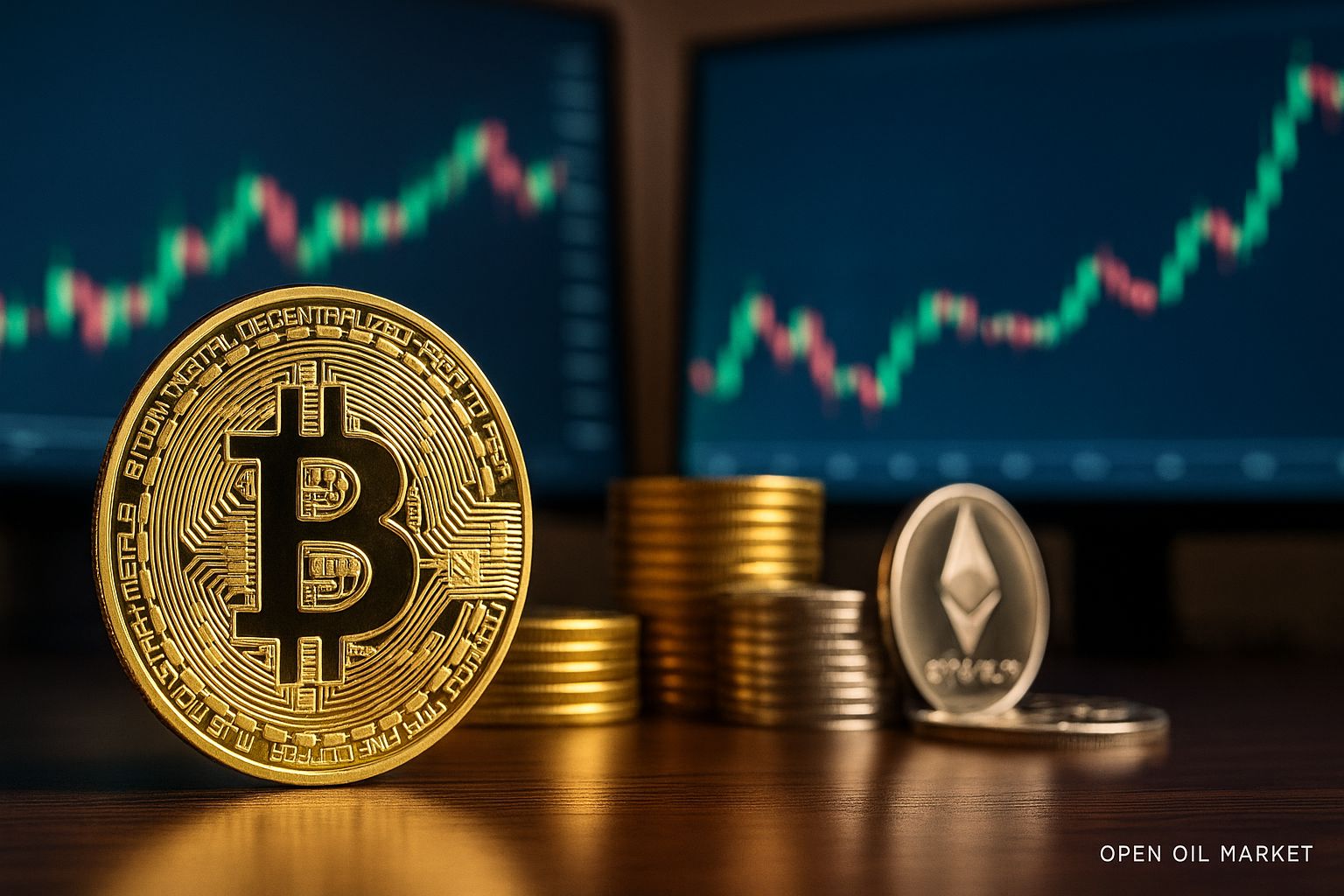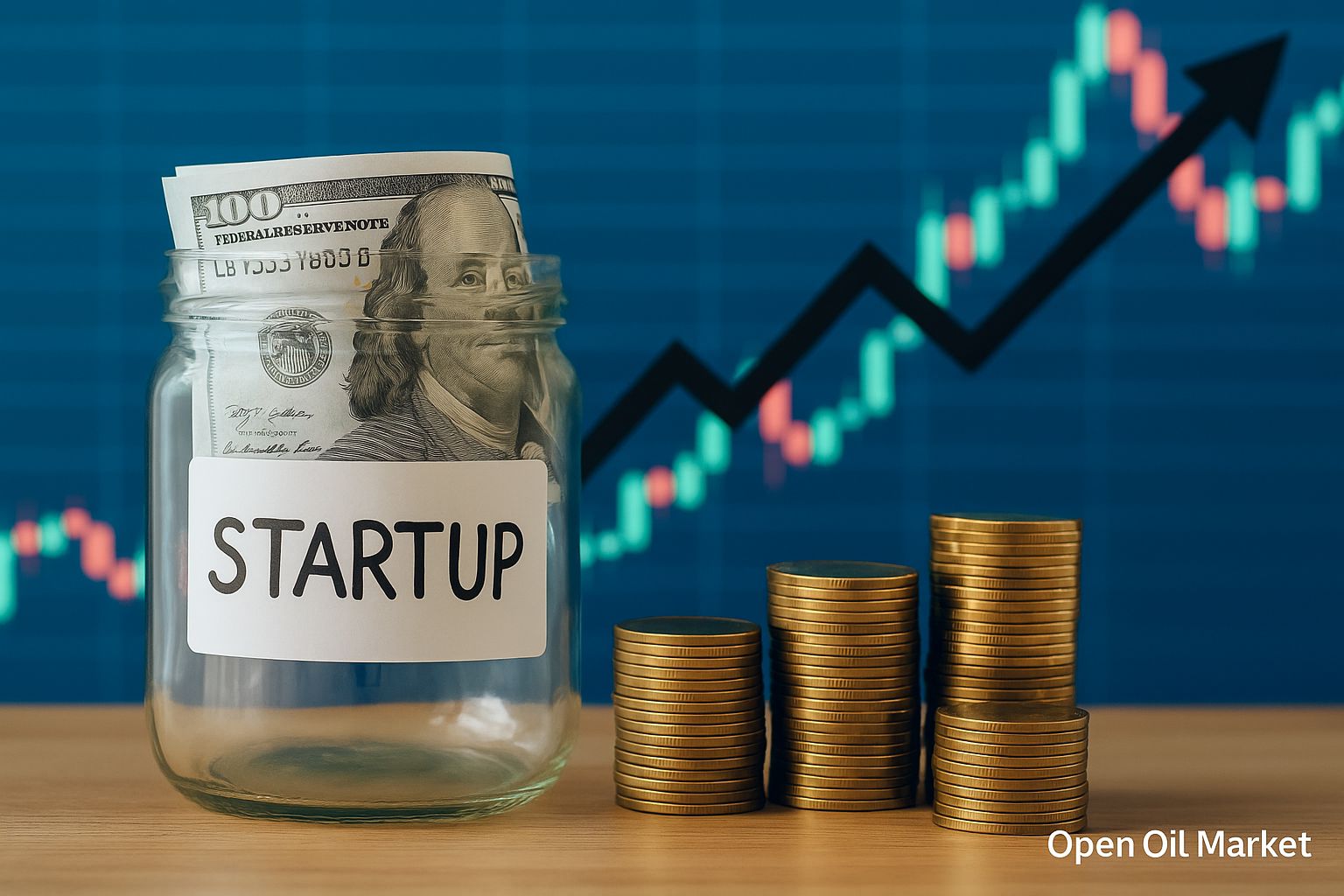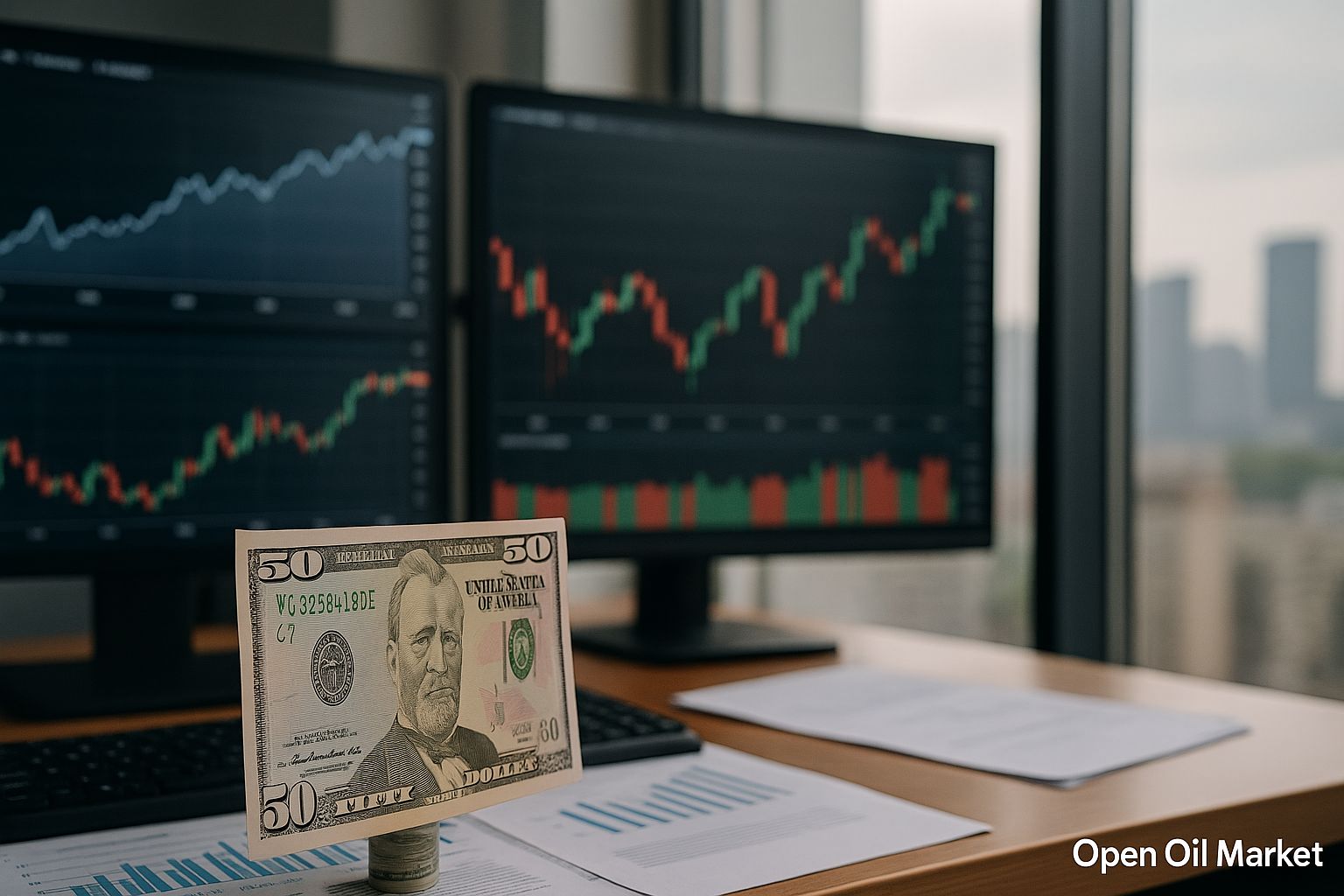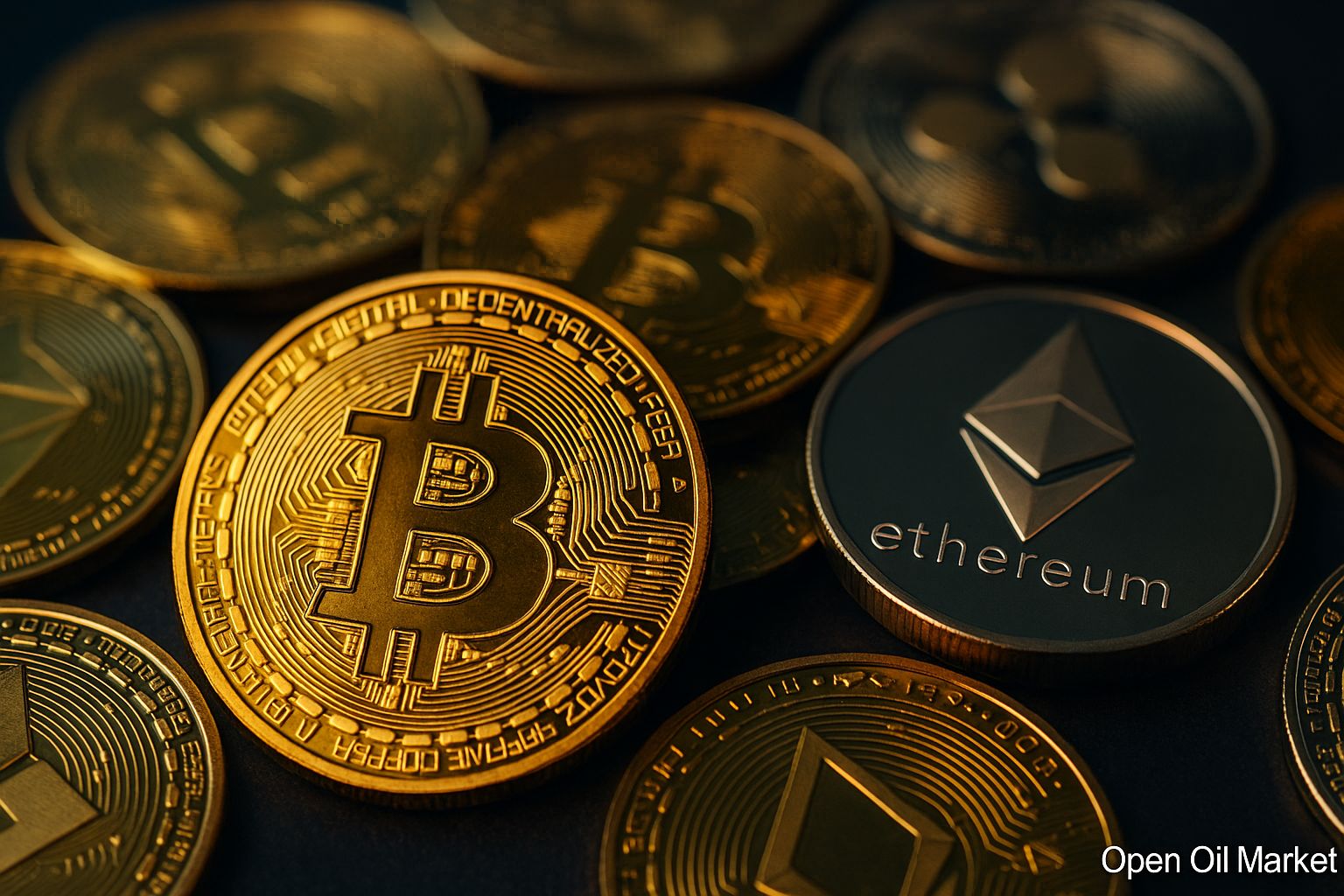
Current Cryptocurrency News as of August 11, 2025: Bitcoin Approaches $120,000, Ethereum Surpasses $4,000, Surge in Institutional Investments, Market Trends, and Top 10 Cryptocurrencies Overview.
The new week in the cryptocurrency market starts on an optimistic note. The total market capitalization has approached $4 trillion, and investors are observing a confident rise in leading digital assets. Bitcoin remains around $119,000 after a recovery last week, while Ethereum has surpassed the $4,000 mark for the first time in eight months. Increased interest from institutional investors and a favorable news environment are supporting the sector's positive dynamics.
Market Overview
Over the weekend, the cryptocurrency market maintained an upward trend. Most of the top 10 digital currencies showed growth over the past week, with some altcoins particularly strong. Bitcoin's share of the total market capitalization slightly decreased (to ~60%), as Ethereum and several other major coins grew at a faster pace. Investors note that overall trading activity has increased, while volatility remains moderate. Many market participants are optimistic but are closely monitoring external factors that could impact price dynamics.
Top 10 Largest Cryptocurrencies Today
- Bitcoin (BTC) – the main cryptocurrency, priced around ~$118,500 (market cap approximately $2.3 trillion). Bitcoin accounts for more than 50% of the total market capitalization.
- Ethereum (ETH) – the leading altcoin, trading around $4,200 (market cap ~$440 billion). A foundational platform for DeFi and NFTs.
- Tether (USDT) – the largest stablecoin, consistently around ~$1.00 (market cap approximately $160 billion). Used for value retention and liquidity.
- Ripple (XRP) – trading around ~$3.00 (market cap ~$170 billion) following a legal victory. A token used for cross-border payments.
- Binance Coin (BNB) – priced at ~$766 per coin (market cap ~$107 billion). The token of the largest cryptocurrency exchange, utilized within the Binance ecosystem.
- USD Coin (USDC) – stablecoin from Circle, around ~$1.00 (market cap ~$64 billion). The second most popular dollar-backed stablecoin.
- Solana (SOL) – priced around $168 (market cap ~$90 billion). A fast blockchain for smart contracts, currently recovering after previous downturns.
- Dogecoin (DOGE) – around ~$0.20 (market cap ~$30 billion). A popular meme cryptocurrency backed by a community of enthusiasts.
- Cardano (ADA) – priced around ~$0.71 (market cap ~$25 billion). A smart contract platform focusing on a scientific approach, continuing its gradual development.
- Tron (TRX) – priced around ~$0.32 (market cap ~$30 billion). A blockchain used for launching stablecoins and decentralized applications, particularly in Asia.
Bitcoin Consolidates Near $120,000
As of the morning of August 11, Bitcoin (BTC) is trading around $118,000–119,000, gaining ~4% over the week. Last week, BTC rebounded from a drop to $112,000, confidently returning to the range above $116,000. Analysts view this as a positive signal: price recovery after a correction back to a previous range often paves the way for further growth. The next major resistance for bulls is the psychological barrier of $120,000; if surpassed, experts predict a movement towards $125,000–130,000 in the medium term.
Fundamental factors are also working in Bitcoin's favor. One key driver has been the announcement that US President Donald Trump has allowed the inclusion of cryptocurrencies in 401(k) retirement plans, which hold approximately $12 trillion. Even if 1-2% of these funds flows into digital assets, it equates to $100–200 billion in new capital. While actual inflows will be distributed over time, this news has bolstered market optimism. Additionally, demand from institutional and corporate investors continues to significantly outstrip the emerging new supply of BTC (the "supply scarcity" effect after the 2024 halving). Currently, on-chain metrics do not signal market overheating, and large holders are hesitant to lock in profits, indicating confidence in Bitcoin's future prospects.
Ethereum Breaks $4,000 Amid Investor Interest
The second-largest crypto asset, Ethereum (ETH), has become the main newsmaker of recent days, confidently surpassing the psychological threshold of $4,000. On Saturday, August 9, the price of Ether peaked at ~$4,218 for the first time in the last eight months, and has solidified above this level. The daily increase has been moderate, but overall ETH has gained over 20% during the week, significantly outpacing BTC's dynamics. Ethereum's growth has also reflected in its relationship with Bitcoin: the ETH/BTC exchange rate rose about 40% over the month, partially erasing Ether's previous undervaluation compared to the leading cryptocurrency.
Experts attribute the ETH rally to several factors. Firstly, interest from large players has intensified – in recent weeks, multiple companies and investment funds have reported increasing their reserves in Ether. Secondly, after a lengthy spring-summer correction, Ethereum is once again attracting capital eager to take advantage of the asset's relatively low pricing. Additional attention to the Ethereum ecosystem is being drawn by industry events: conferences Ethereum NYC and ETHGlobal are being held in New York this week, and positive news from developers is expected. Finally, market expectations are rising that following Bitcoin, regulators will approve the launch of exchange-traded funds (ETFs) for Ethereum – this could further simplify the flow of institutional capital into this altcoin.
XRP Rises After Ending Dispute with SEC
The XRP token (associated with Ripple) exhibited outstanding dynamics last week due to positive news from the legal front. The long-standing court battle between Ripple and the U.S. Securities and Exchange Commission (SEC) has officially ended, with both parties abandoning further appeals. Thus, the 2023 court ruling recognizing XRP as a non-security in secondary market sales stands firm. This precedent has eliminated significant legal uncertainties that have long weighed on XRP.
Following this news, the price of XRP surged sharply. The token's value rose by around 10%, approaching $3, which is the highest level since early 2018. The resolution of the legal matter has strengthened investor confidence – XRP's status is now officially compliant with the law, and its free trading on exchanges is without limitations. Market data suggest some institutional investors have already begun to eye XRP: reports indicate its inclusion in the portfolios of certain funds. Ripple, on its part, now has the opportunity to scale its cross-border payment business based on XRP without the risk of new lawsuits from regulators.
Dynamics of Other Leading Altcoins
Besides ETH and XRP, other major cryptocurrencies are also attracting investor attention. Below are updates on several leading altcoins from the top ten:
- Binance Coin (BNB) – quoted at around $766 per coin. Over the week, the BNB price has remained nearly unchanged, with a market capitalization of about $107 billion (5th place). The Binance ecosystem coin maintains resilience despite regulatory risks surrounding the exchange. According to insiders, some large players have begun accumulating BNB in anticipation of long-term growth in asset value.
- Solana (SOL) – trading around $168. In 2025, SOL has rebounded several times from the past year’s lows, regaining its position in the top 10 (market cap ~$90 billion). The Solana project has successfully navigated the technical difficulties of 2022 and is currently attracting users through its high network speed. Last week, SOL corrected by ~5%, but it remains one of the growth leaders in the long-term trend due to active development in the DeFi and NFT segments on its platform.
- Tron (TRX) – trading at ~$0.32. The market capitalization of TRX reached ~$30 billion, allowing this coin to enter the top ranks. The Tron blockchain is widely used for issuing stablecoins and running decentralized applications, especially in Asian markets. Stable demand for USDT on the Tron network and new partnerships are contributing to the steady growth of the TRX price.
- Dogecoin (DOGE) – priced around $0.20. The most popular meme token ended the week with a slight setback (around –10%) after significant growth earlier in the year. DOGE’s market capitalization remains around $30 billion, securing its place in the top 10. Enthusiast community support and occasional attention from well-known entrepreneurs maintain interest in Dogecoin, although its volatility traditionally remains high.
- Cardano (ADA) – priced at ~$0.71 (market cap around $25 billion). The Cardano blockchain platform continues gradual technological development (improving throughput, launching sidechain solutions), but its native token ADA shows more subdued dynamics compared to competitors. Over the past week, ADA has dropped nearly 10%, partially losing ground after previous July gains. Nonetheless, the coin has significantly strengthened from its lows over the year and retains its position among the largest cryptocurrencies.
The Role of Stablecoins and Growth in DeFi Liquidity
Dollar-pegged stablecoins continue to play a crucial role in the cryptocurrency market by providing liquidity. Leading the segment is Tether (USDT) with a market capitalization of about $160 billion; second is USD Coin (USDC) with ~$64 billion. Both of these stablecoins maintain a 1:1 peg to the dollar and are widely used by traders for transactions and risk hedging. The issuance of USDT has reached all-time highs amid strong demand, as investors increased their holdings of stablecoins with the rise in cryptocurrency prices.
Additionally, a revival in the decentralized finance (DeFi) sector is emerging. In July, the total value locked (TVL) in DeFi protocols reached a record $270 billion, closing the month at approximately $259 billion (over 30% growth in a month). Trading volumes in the NFT markets doubled during the same period. These indicators suggest a resurgence of user interest in decentralized applications and digital collectible tokens. Increased activity in the DeFi and NFT segments indirectly supports demand for Ethereum, Solana, and other platform tokens, driving further development of the crypto industry.
Institutional Investors and Regulation: Impact on Industry
The influx of institutional investments and regulatory changes are playing an increasingly significant role in the current rally. Recent events indicate heightened attention from the traditional financial sector towards cryptocurrencies. In the U.S., two prestigious universities – Harvard and Brown – have reported substantial Bitcoin investments via exchange-traded funds (ETFs) for the first time. According to the Q2 reporting, Harvard's endowment fund acquired approximately $117 million in a Bitcoin ETF (iShares from BlackRock), while Brown University increased its stake to $13 million. This move by conservative academic institutions serves as an important signal: more and more institutional investors are starting to include crypto assets in their portfolios.
Meanwhile, several Bitcoin ETFs launched by major investment firms are already operating on the stock market. The introduction of accessible financial instruments (such as BlackRock’s ETF) significantly eases the entry of institutional and retail investors into the crypto sphere. Furthermore, there are expectations in the market for approvals of similar funds for Ethereum and other highly liquid cryptocurrencies – this could further expand the presence of institutions in the industry.
The regulatory environment is also gradually becoming more favorable to cryptocurrencies. Amid personnel changes at the Federal Reserve, President Trump has nominated economist Stephen Mearian, known for his favorable stance towards digital assets, to the Board of Governors. Market participants perceive this as a potentially positive factor: the new leadership could facilitate a relaxation of cryptocurrency industry regulations. In addition, there are signs of possible easing of monetary policy on the macroeconomic front. Federal Reserve board member Michelle Bowman expressed support for the idea of lowering interest rates three times by the end of the year. Cheaper money traditionally increases demand for risk assets, and expectations for rate cuts are adding optimism among crypto investors.
However, certain regulatory decisions are still having mixed impacts. For instance, the expansion of U.S. import tariffs announced on August 8 is affecting cryptocurrency mining equipment as well. Rising costs for importing ASIC miners could expedite the relocation of "hardware" manufacturing to the U.S. and modernization of equipment in other regions. The largest manufacturer, Bitmain, has already announced plans to establish assembly facilities in the U.S. Although these measures raise costs for miners, their short-term effect on the global balance of supply and demand for Bitcoin is assessed as neutral.
Market Prospects for the Near Future
In the coming days, crypto investors will focus on macroeconomic signals. On Tuesday, August 12, the latest inflation statistics (CPI index) will be released in the U.S., which could influence market sentiments through the lens of future Fed policy. Additionally, data on economic activity in Europe and statements from central bank representatives are expected later in the week. These events could temporarily heighten volatility in the markets.
Despite external risks, the overall outlook for cryptocurrencies remains favorable. Technical analysts note that Bitcoin currently has a “clear path” to new heights: overcoming the $120,000 zone could provide the market with a new impetus. If key data does not disappoint, BTC may test year-to-date highs around $125,000–130,000. Following its rapid rise, Ethereum is likely to enter a consolidation phase around $4,000, which represents a healthy correction before potential further growth. Meanwhile, the activity of institutional players – from hedge funds to university endowments – serves as a supportive factor for the entire market.
Thus, the crypto market enters a new week in anticipation of a potential momentum. The strengthening positions of Bitcoin and Ethereum, the influx of fresh capital, and record indicators from the DeFi sector inspire confidence among investors. However, the maintenance of the upward trend will largely depend on external conditions – the macroeconomic situation and regulatory measures. The question will remain whether Bitcoin can continue to maintain dominance, or if the leading role will temporarily shift to rapidly growing altcoins. Overall, the market tone is close to business optimism: the cryptocurrency industry is showing signs of maturity and expansion, attracting new participants and capital.




